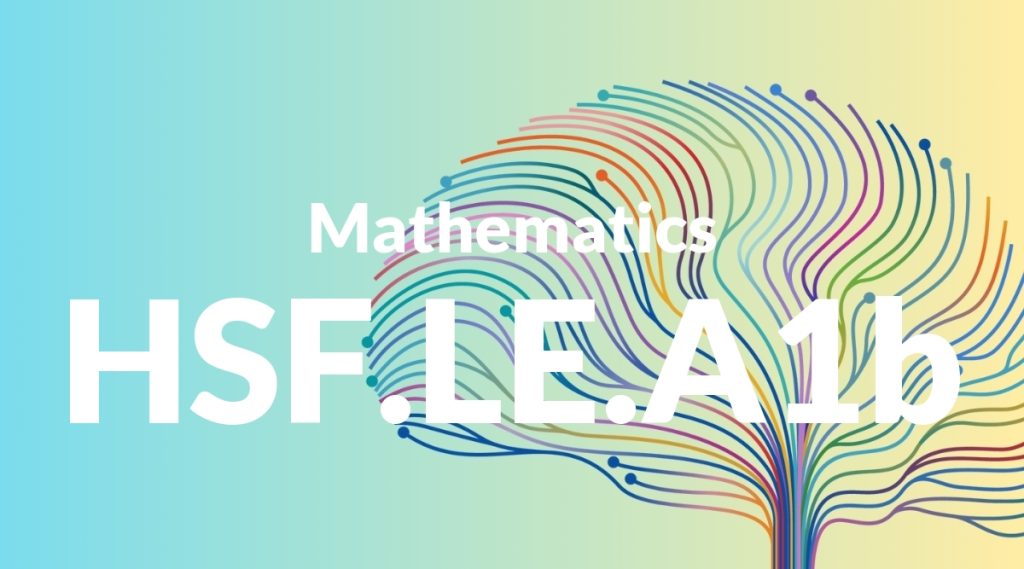Standard: HSF.LE.A1 – Distinguish between situations that can be modeled with linear functions and with exponential functions.
Grade level: High School: Functions
Subject: Mathematics
Domain: Linear, Quadratic, & Exponential Models
Teacher Overview
This standard focuses on helping students distinguish between linear and exponential functions, which are fundamental concepts in mathematics. Understanding these differences is crucial for solving real-world problems involving growth and decay, and it sets the stage for more advanced studies in functions and modeling. Students need to be comfortable with basic algebra, including solving equations and understanding functions. They should also grasp the concept of rates of change and how they apply to different types of functions.
Mastering this standard will enable students to tackle more complex functions and apply their understanding to diverse real-world problems. They will also be better prepared for advanced topics in mathematics, such as quadratic and polynomial functions.
Common Misconception 1
Many students mistakenly believe that any function that increases over time must be linear. This misconception arises because linear functions are often the first type of function students encounter, and they may not yet be familiar with the concept of exponential growth.
Intervention 1
To address this misconception, use visual aids like graphs to compare linear and exponential functions. Show how exponential functions grow much faster over time and provide real-world examples to reinforce this understanding.
Common Misconception 2
Students often confuse exponential decay with linear decrease, thinking that a constant rate of decrease applies to both. This misunderstanding can lead to incorrect interpretations of real-world phenomena.
Intervention 2
Use examples like radioactive decay or cooling objects to illustrate exponential decay. Graph these examples alongside linear decreases to highlight the differences in how quickly values change over time.
Prerequisite Knowledge
Students should have a solid understanding of basic algebraic concepts, including the ability to solve linear equations and inequalities. Familiarity with the concept of a function, as well as an understanding of rates of change, is also essential.
Subsequent Knowledge
After mastering this standard, students will be able to analyze more complex functions, including quadratic and polynomial functions. They will also be able to apply their understanding of linear and exponential models to real-world problems and further explore logarithmic functions.
Instructional Activities
- Graphing linear and exponential functions
- Real-world problem-solving scenarios
- Group discussions and presentations
- Interactive simulations of growth and decay
- Comparative analysis of different models




